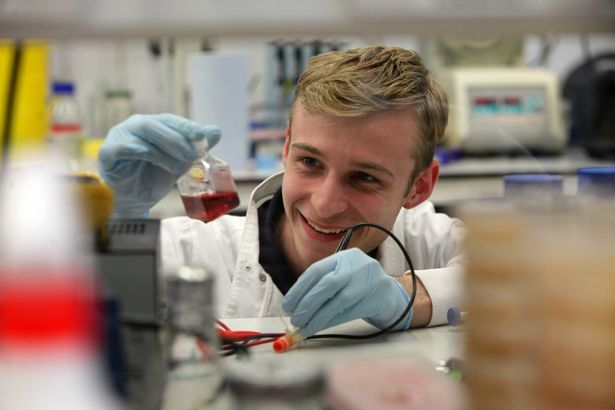Usually an omen for restaurant closures and pending health violations, e. coli has gotten a bad reputation as an infectious bacteria that causes food poisoning symptoms in so many unfortunate victims. Recently however, a group of undergraduates at the UK’s Newcastle University tweaked the bacteria and reimagined it as an innovative tool to create a bacteria-based lightbulb.

Building on the bio-electric field
Supervised by Professor Anil Wipat, the team consists of eight undergraduates and researchers who worked together on the project – cleverly named “Culture Shock” – to create a lightbulb from genetically modified e. coli. The project will be entered into the upcoming International Genetically Engineered Machine (iGEM) competition in Boston this October.
In 2013, researchers from the Bristol Robotics Laboratory successfully created a robotic heart that runs on urine. They achieved the cringe-worthy yet remarkable feat by using microbial fuel cells (MCFs) to digest the waste, which then gave off an electrical charge. Today, the Culture Shock lightbulb works using the same method. Check out the video below to see the fuel cell being 3D printed and continue reading to learn more about the project.
According to the team’s project page, they were inspired by the iGEM founder, Tom Knight’s “Lego-like” approach to synthetic biology. They went on to explain,
“Our project involves us replacing some of the traditional electronic components in a circuit with biological alternatives. The circuit will allow synthetic biologists to combine bacterial and electronic components to create electro-biological circuits. The ultimate goal is the fusion of synthetic biology and electronics to augment electronic devices.”
This proposed fusion of synthetic biology and electronics would potentially allow users to pick and choose appropriate components in order to build larger circuit systems, just like piecing together Lego bricks to make a larger structure. Powered by genetically engineered e. coli, which becomes luminescent when stimulated by an electrical heat current, the bio-circuitry demonstrated in the lightbulb could signify “a massive step forward due to [its] long term reliability and capacity to reproduce.”
Out of this world applications
The team hopes to inspire biologists working on the Mars Mission, who face obstacles with a lack of processed materials available on the foreign planet. With their innovative process, the team believes that they could a potential solution. Additionally, as they continue to test and improve upon the Culture Shock lightbulb, the team will release their findings to the public so that other biologists and researchers can develop their own solutions as well.



